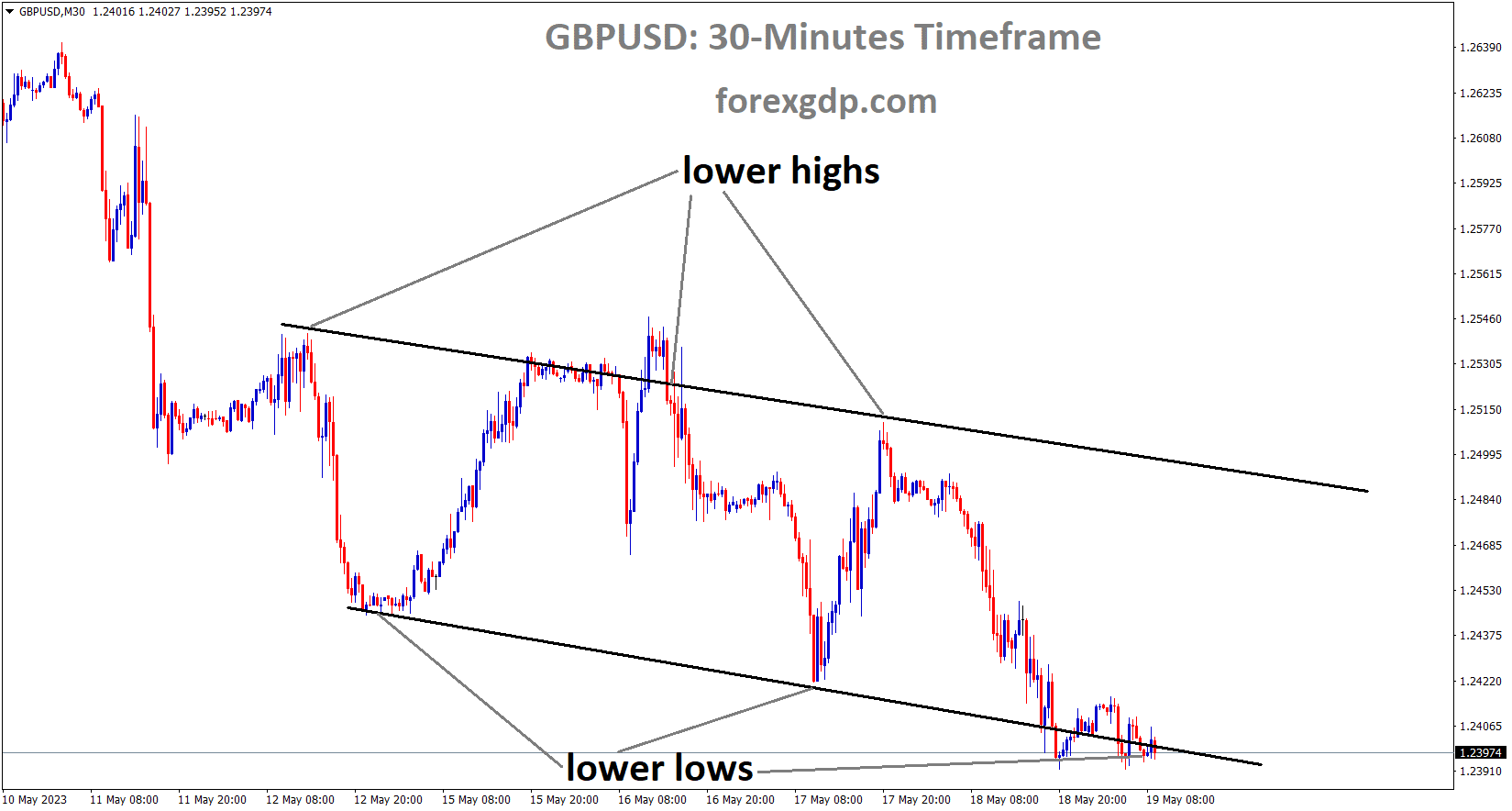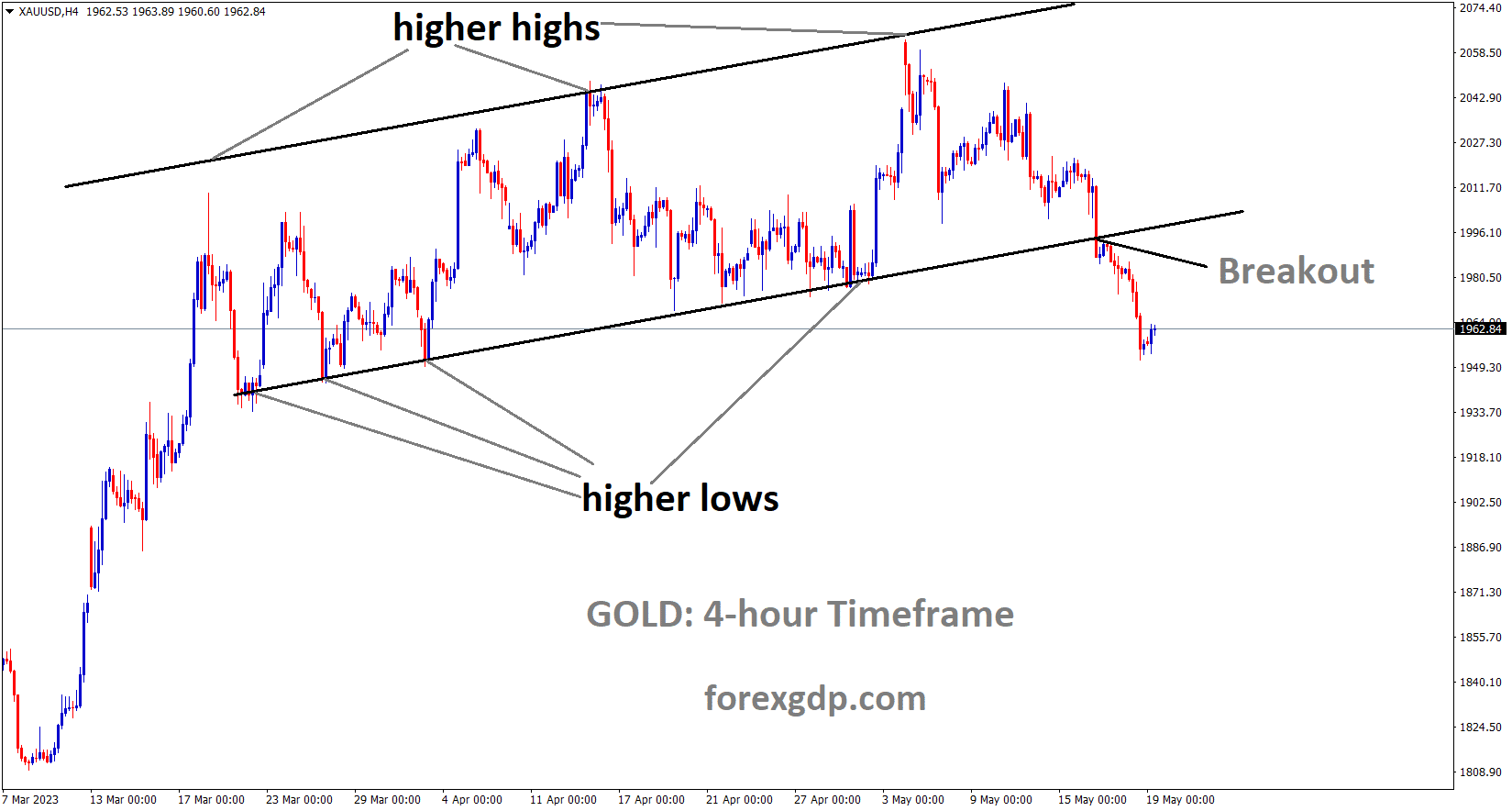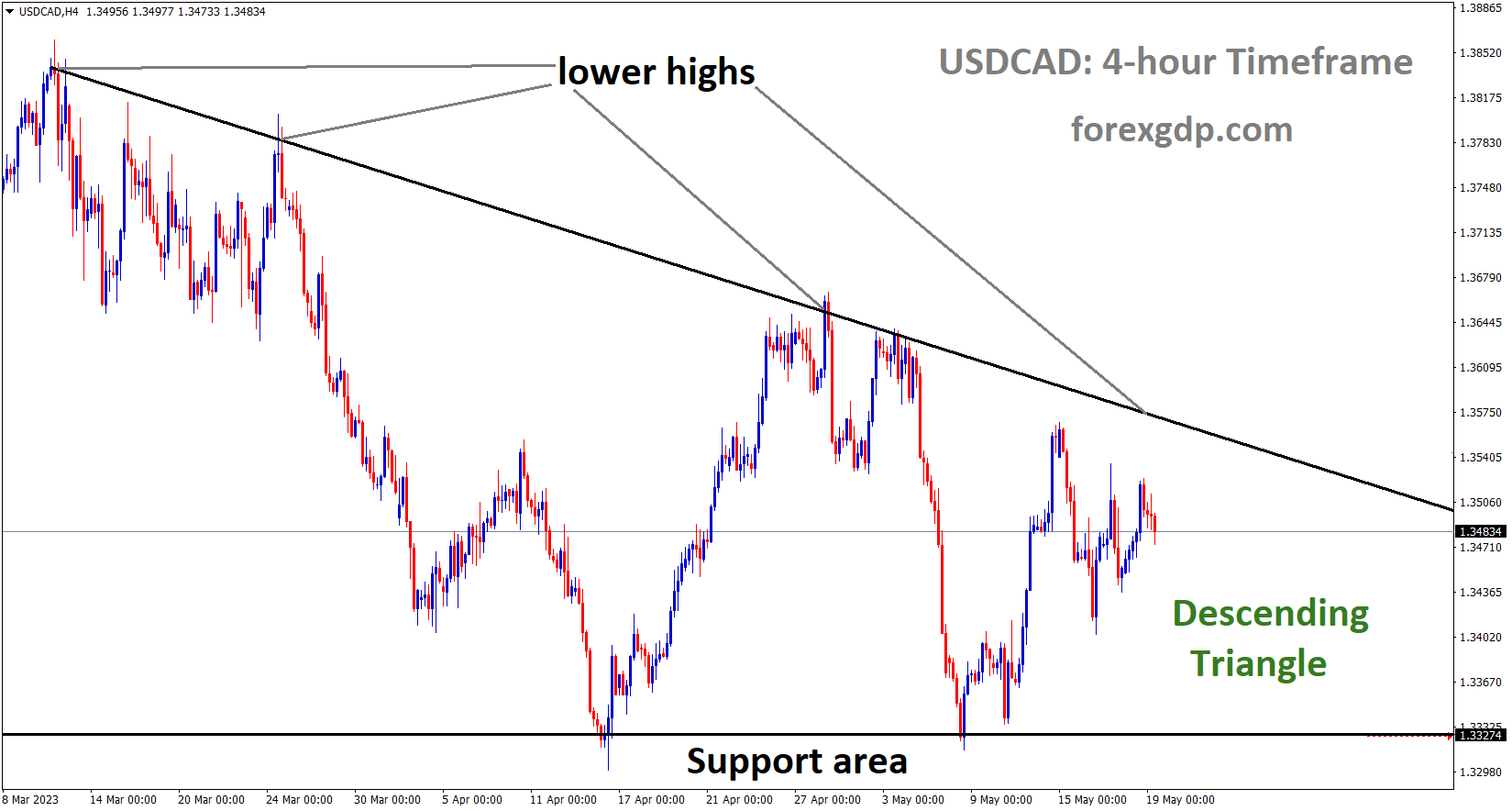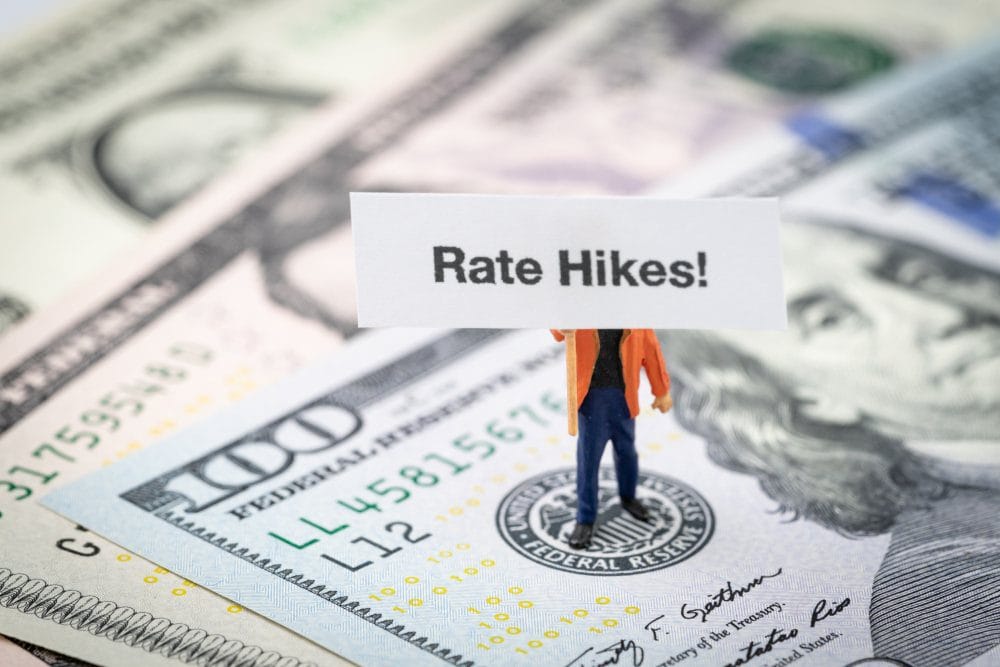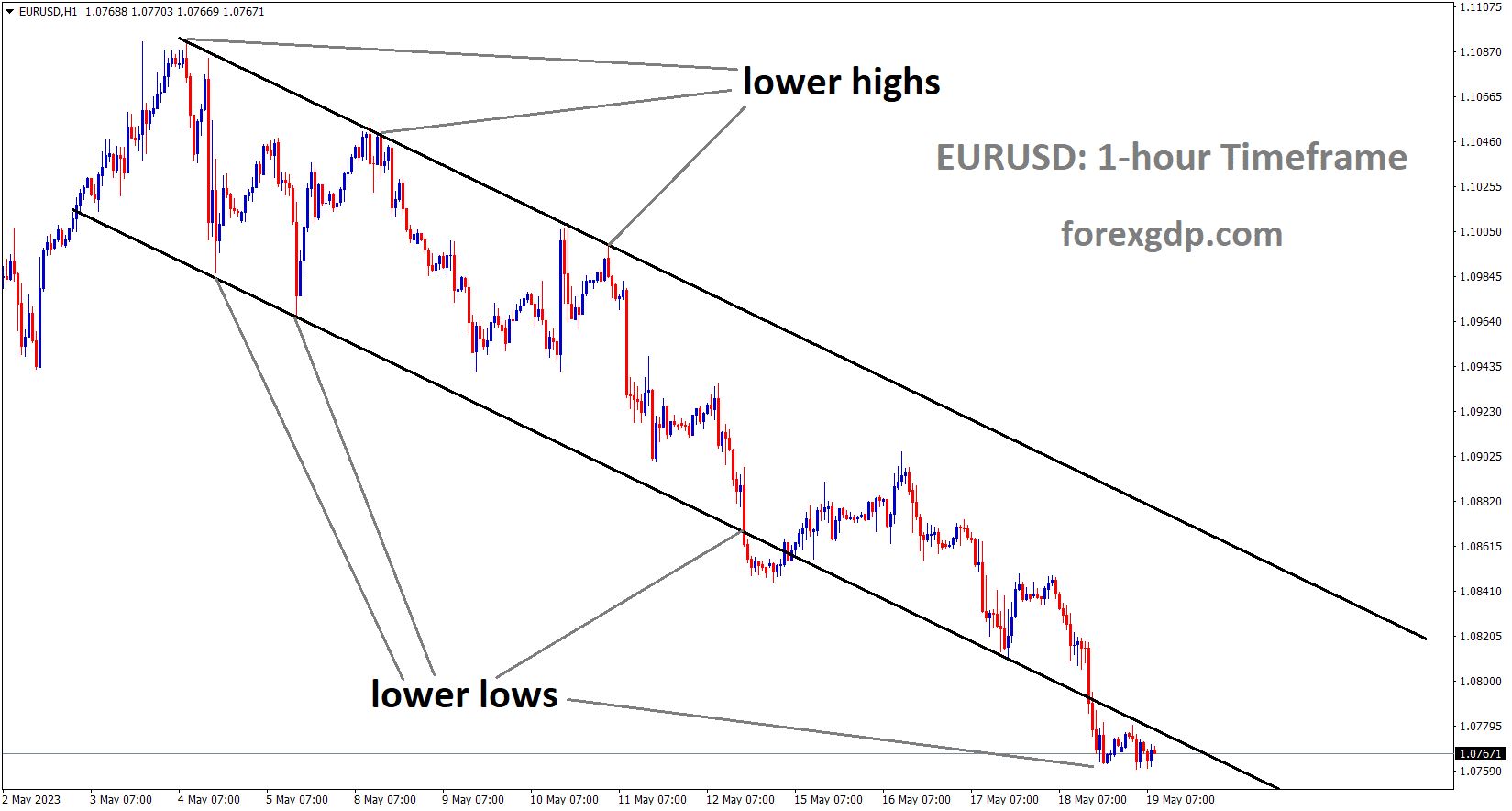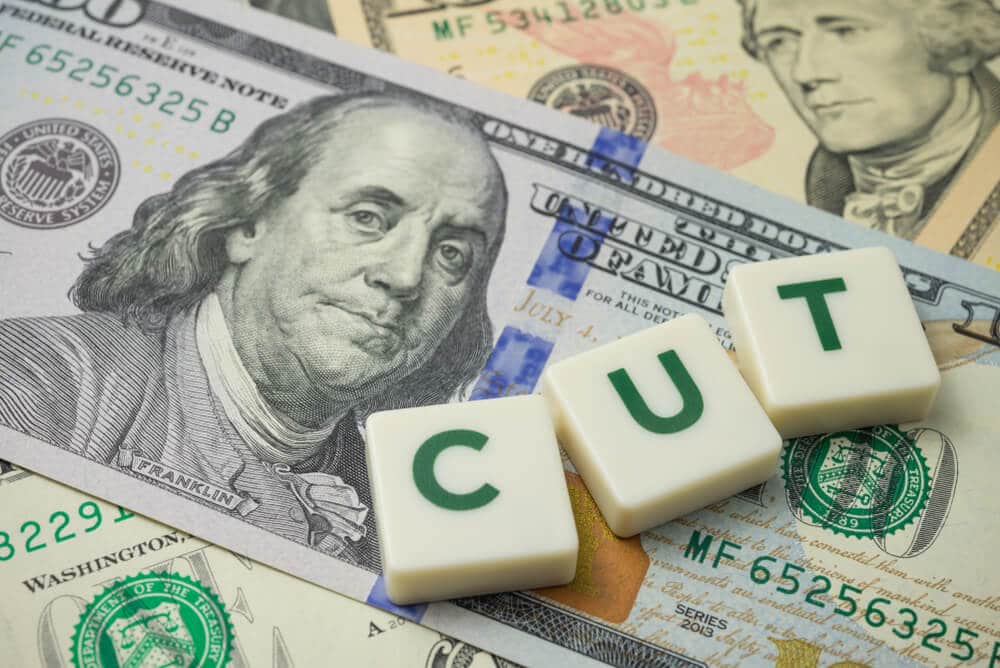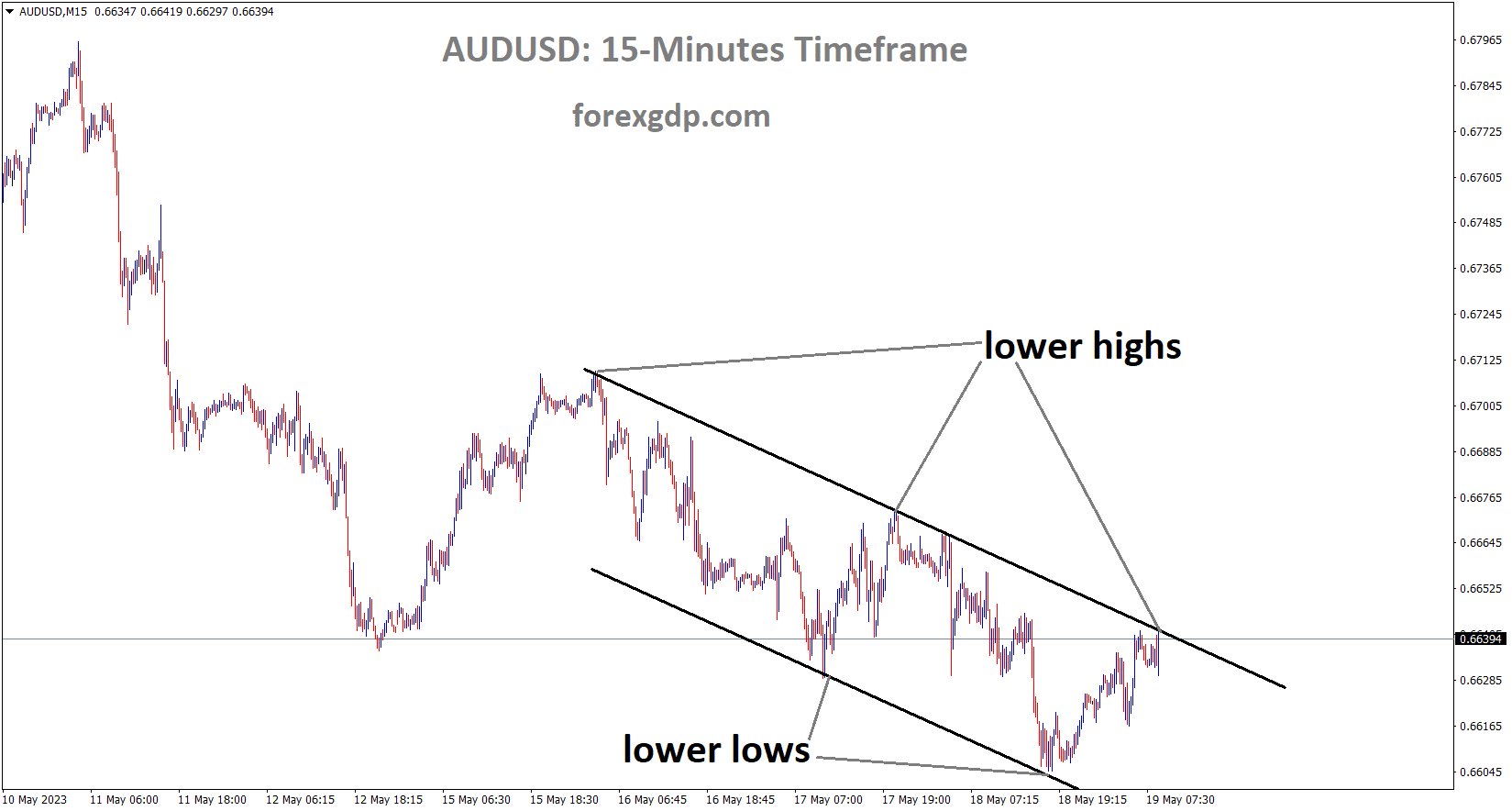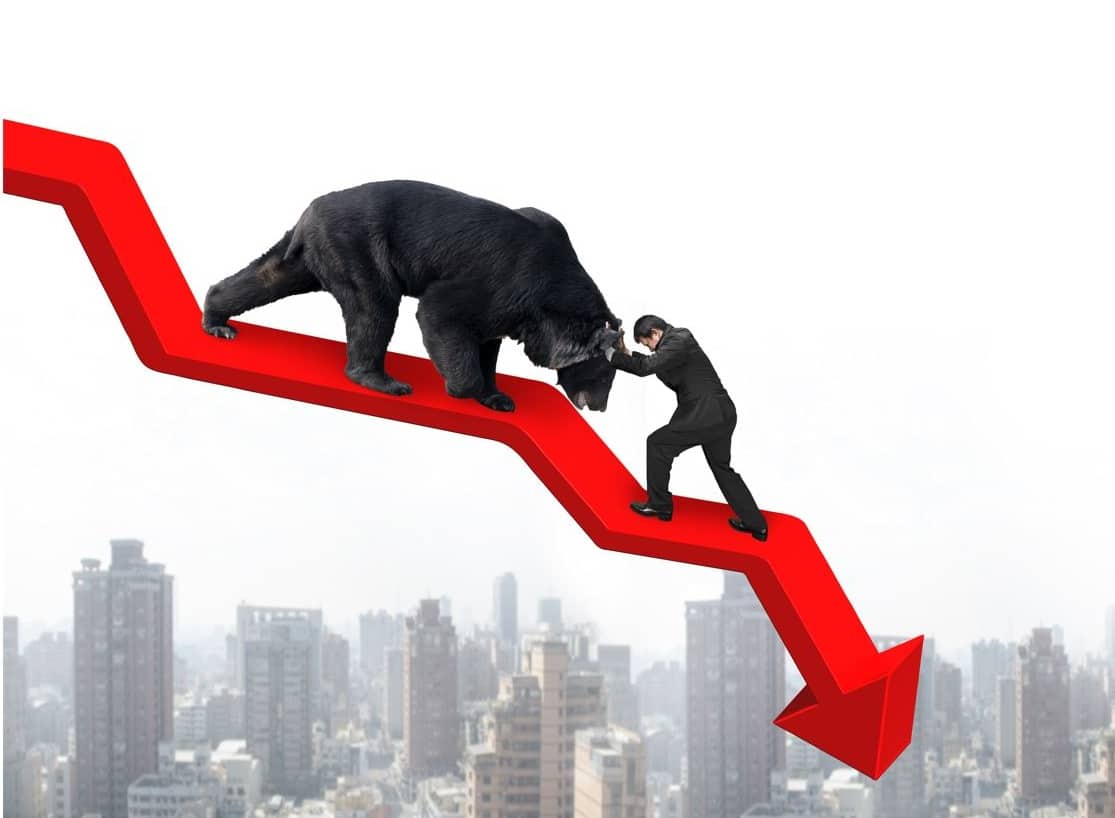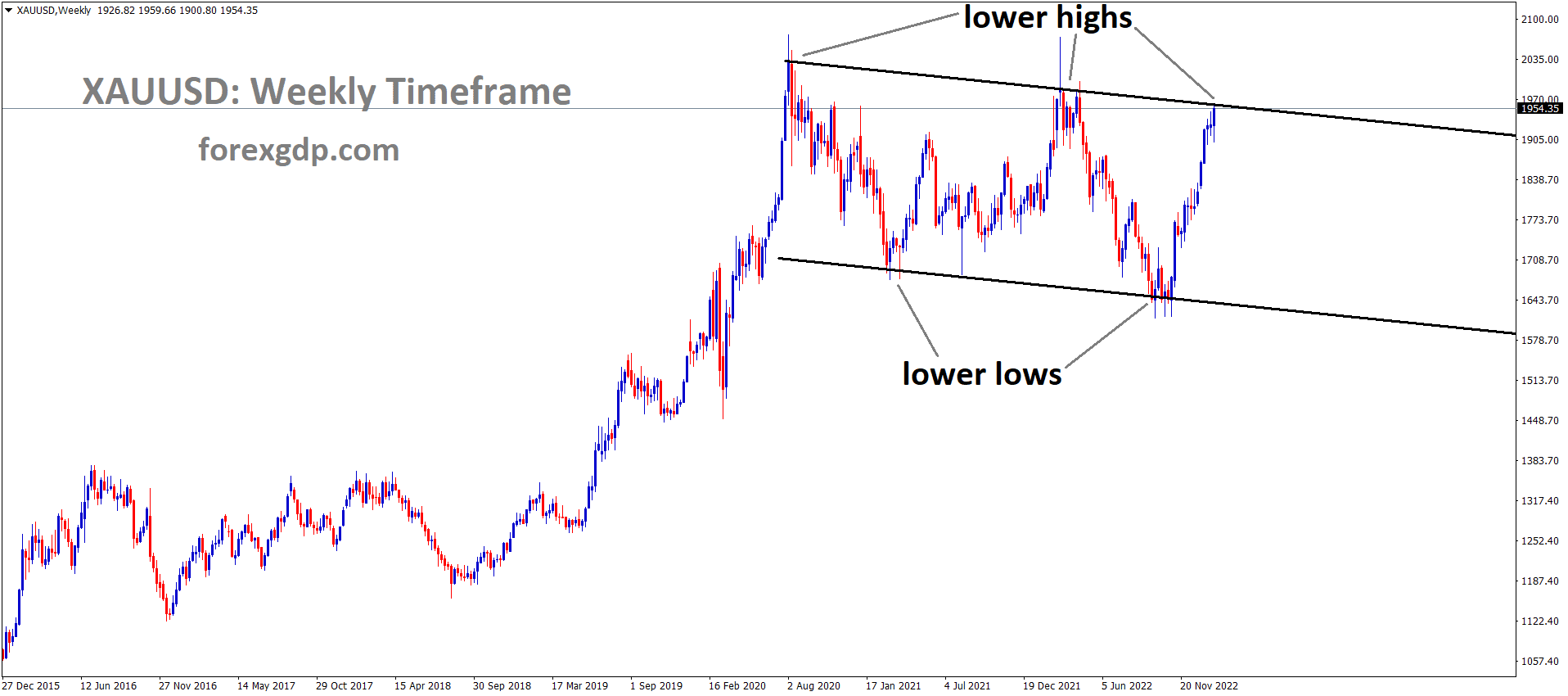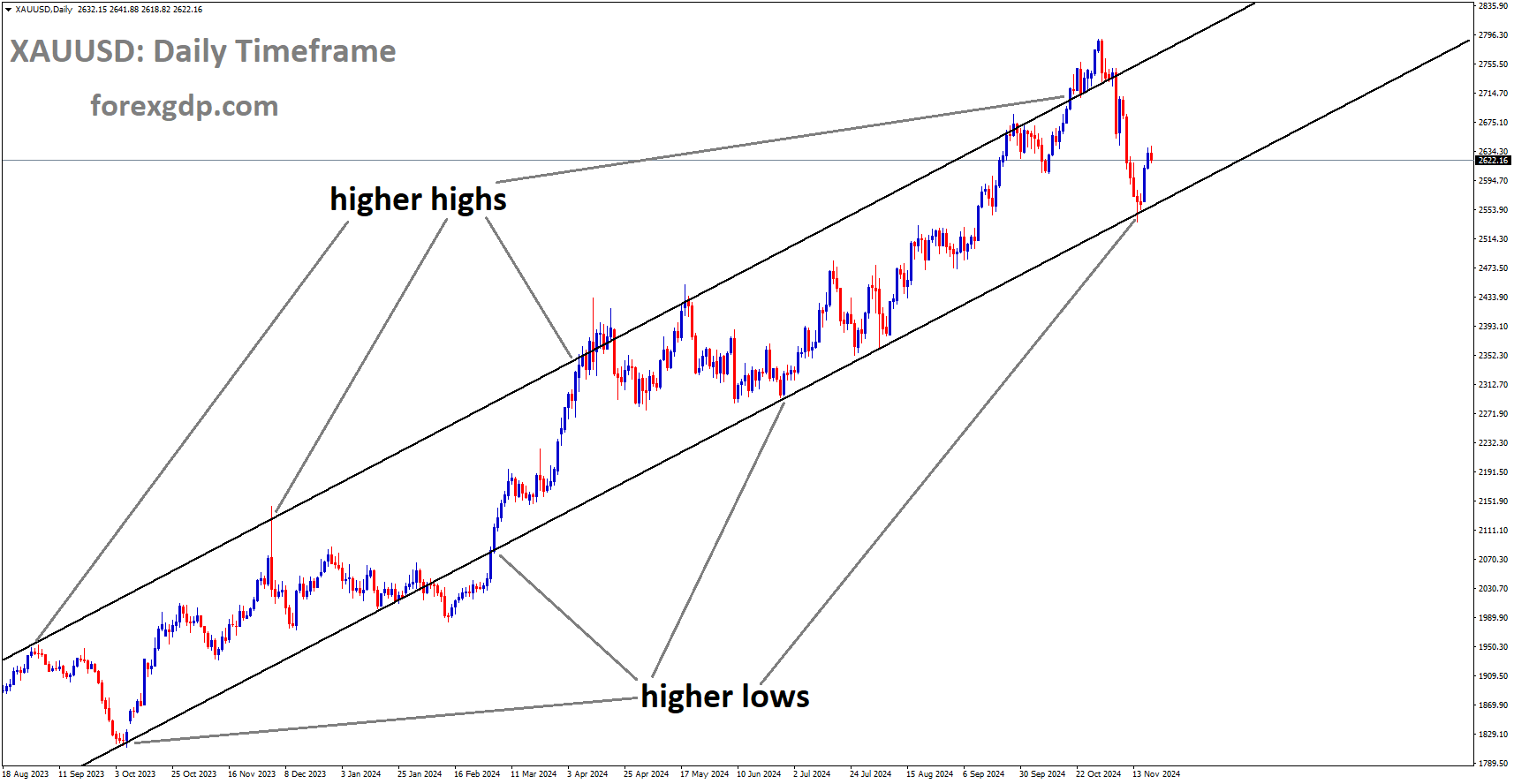GBPUSD is moving in the Descending channel and the market has reached the lower low area of the channel
The Fed Chair is expected to pause interest rates in June until September as inflation fell to 4.9% in April. Another issue is the US debt ceiling crisis; US banks have limited liquidity as a result of bank failures in February. Rate cuts in the table are expected to be 75 basis points by the end of 2023, but this week’s speech will outline the June month rate process.
Concerns Rise as Consumer Expectations for Inflation Exceed Projections
As the week came to a close, attention shifted towards the latest University of Michigan Sentiment report, revealing higher-than-expected consumer expectations for inflation. Despite the sentiment gauge falling short of expectations, the majority of Americans remained concerned about the persistent rise in prices, which could have potential economic consequences in the future.
Additionally, the US Consumer Price Index (CPI) report indicated a slightly lower headline inflation rate of 4.9%, but the core gauge highlighted persistent price pressures at 5.5%. As a result, traders adjusted their near-term expectations of a Federal Reserve rate hike, leading to an increase in Treasury yields and bolstering the US Dollar.
XAUUSD has broken the Ascending channel in downside.
Looking ahead, the economic calendar in the United States for the upcoming week appears relatively calm, with notable data releases such as retail sales, MBA mortgage applications, and initial jobless claims. However, market volatility could arise towards the end of the week due to the highly anticipated policy panel featuring Fed Chair Jerome Powell and former Chair Bernanke.
The Fed’s Rate Hike Cycle and Investor Sentiment
Investors on Wall Street eagerly await the Federal Reserve’s decision to wind down its aggressive rate-hiking cycle, which has impacted markets and tested investor morale. While a pause in interest rate hikes seems likely, the possibility of rate cuts may be further off than expected.
Despite a resilient stock market in the face of challenges such as persistent inflation, interest rate hikes, Covid-related shutdowns, and geopolitical tensions in 2022, investors remain cautious for any signs of a potential slowdown in rate increases.
USDCAD is moving in the Descending triangle pattern and the market has reached the lower high area of the pattern.
With the Fed’s recent rate hike in May and indications of a possible pause in June, experts suggest that rate cuts might not occur as soon as July, especially if the US economy remains strong and avoids defaulting on its debt. Surprisingly, a rate-hike pause might be more beneficial for stocks compared to an immediate rate cut.
Factors Influencing the Fed’s Rate Decision
Two key factors currently discourage the Fed from implementing rate cuts. First, inflation remains stubbornly high, exceeding the Fed’s target of 2%. The Fed’s preferred inflation gauge, the Personal Consumption Expenditures price index, recorded a 4.2% increase for the 12 months ending in March. Second, despite a cooling US housing market, low inventory and persistent demand continue to drive home prices higher in certain regions. With these factors in mind, there is no convincing evidence yet to prompt the Fed to consider lowering rates.
The Fed has a history of cutting rates only during crises, as seen during the emergency meeting in March 2020 when the Covid-19 pandemic initiated the first bear market in 11 years. A serious downturn in the banking sector, labor market, or economy would likely be necessary for the central bank to lower rates in July.
Consequences of Premature Rate Cuts
Even if the Fed were to decrease rates in the near future, an immediate bull run in the stock market is not guaranteed. Historical data indicates that stocks tend to perform modestly after the Fed initiates rate cuts compared to a pause in rate hikes. Credit Suisse’s analysis reveals that, on average, the S&P 500 climbs 16.9% in the 12 months following the last rate hike, but falls 1% in the 12 months after the first rate cut. If the May rate increase represents the end of the current cycle, stocks could perform well for the rest of the year.
EURUSD is moving in the Descending channel and the market has reached the lower low area of the channel.
However, if the Fed were to ease rates in July, as implied by futures markets, the upside potential would be more limited. Premature rate cuts could carry severe consequences for the economy, as demonstrated by the experience of the 1970s when interest rates were dramatically hiked and then reduced, leading to high inflation and subsequent recession.
Fed’s Cautionary Approach and Future Rate Cuts
Federal Reserve Chair Jerome Powell has acknowledged the missteps of the past and indicated a reluctance to lower rates this year.
The Fed remains committed to managing inflation. Market experts, such as Marco Pirondini from Amundi, suggest that the Fed is in no hurry to cut rates this time. However, a rate cut in the future is not completely off the table.
AUDUSD is moving in the Descending channel and the market has reached the lower high area of the channel
Nicole Webb, a senior vice president at Wealth Enhancement Group, believes that the Fed will eventually want to lower rates but at a slower pace than the rate hikes of the past year. A gradual decrease to around 2.5% could be achieved without reigniting inflation concerns. While future rate cuts remain possible, the timing and pace will likely depend on the overall economic conditions and the Fed’s cautious approach.
Conclusion
The latest University of Michigan Sentiment report highlighting higher-than-expected consumer expectations for inflation, coupled with persistent price pressures indicated by the US CPI report, have led traders to adjust their rate hike expectations. As the US economic calendar quiets down in the week ahead, market participants eagerly anticipate the policy panel featuring Fed Chair Jerome Powell and former Chair Bernanke, which could add volatility to financial markets. While investors hope for a pause in the Fed’s rate hike cycle, rate cuts may not be imminent due to lingering inflation concerns and a robust economy. Premature rate cuts could have adverse consequences, as historical data suggests. The Fed’s cautious approach will likely shape the future path of interest rates, considering the overall economic conditions and inflationary pressures.
Don’t trade all the time, trade forex only at the confirmed trade setups.
Get Live Free Signals now: forexgdp.com/forex-signals/

